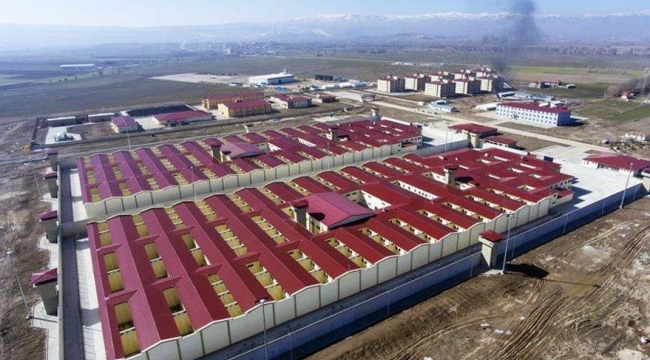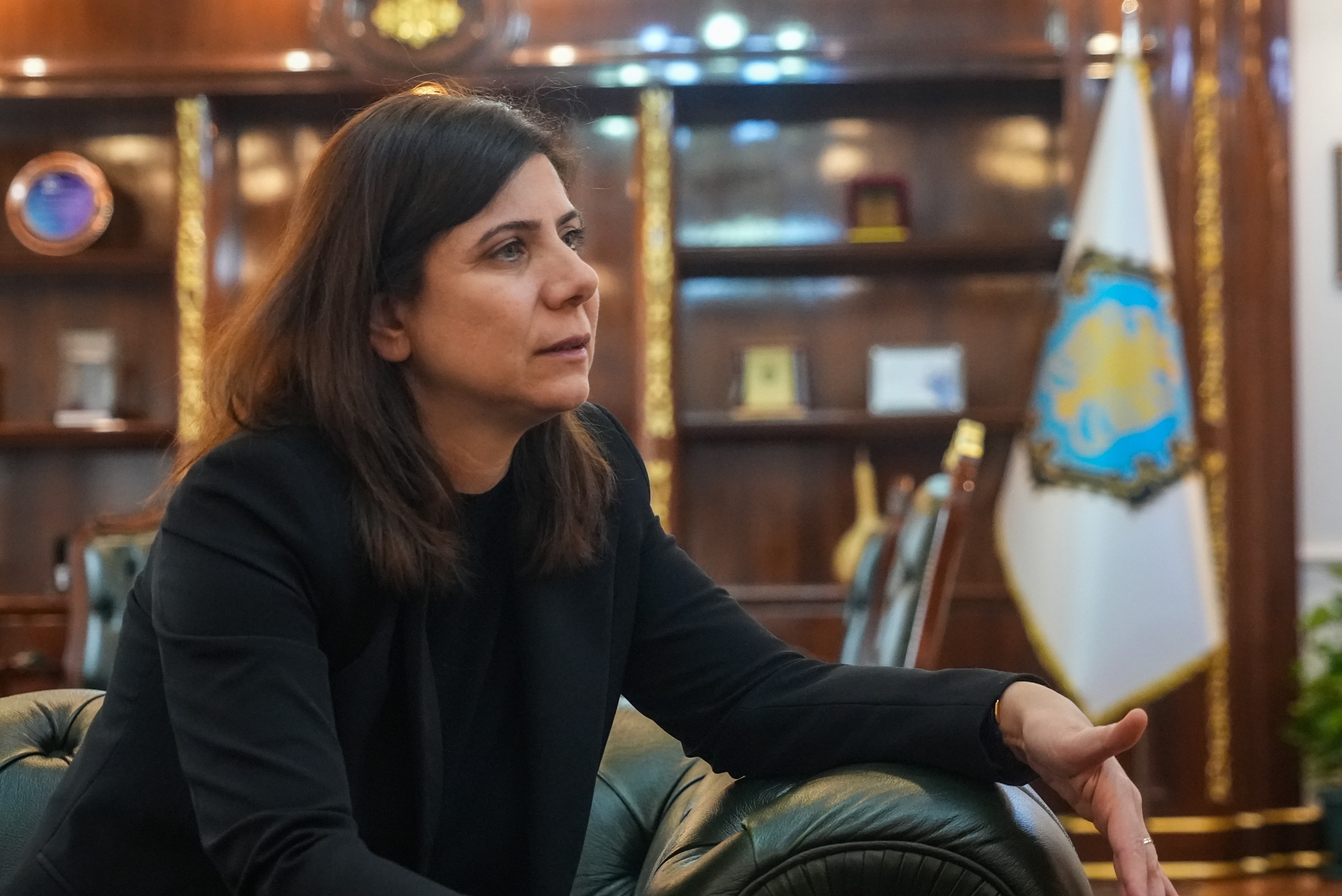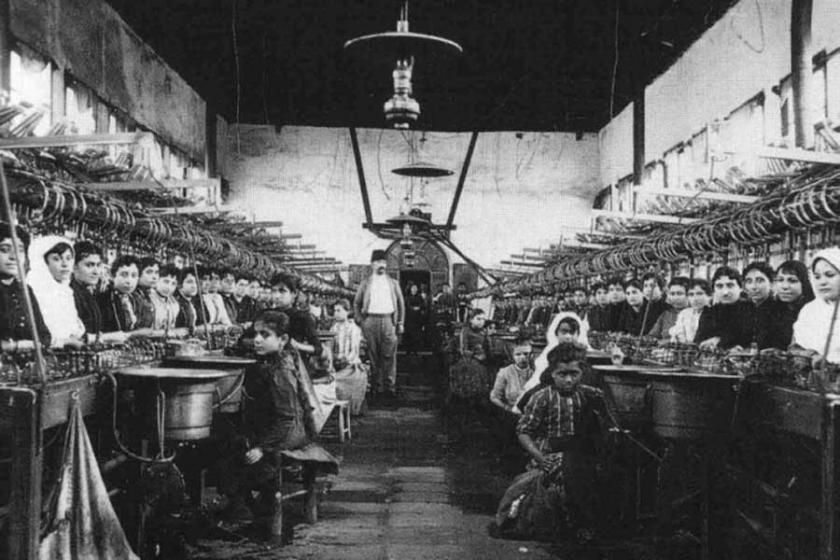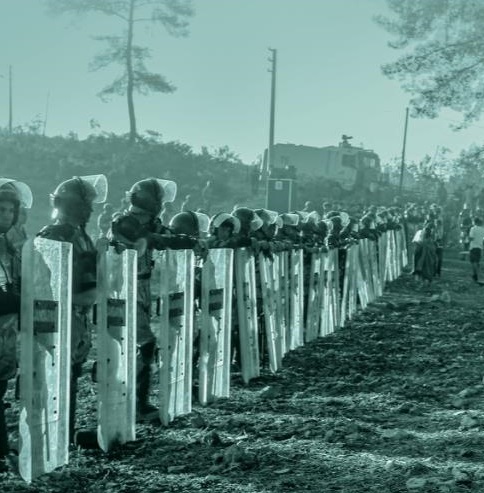Prisons described as Type S and Type Y Penitentiary Institutions or High Security Penal Institutions, which became operational after 2021, mostly consist of single-person cells, where isolation prevails due to both their architectural structures and practices. The sky is not even visible in the prison yard, all communication is provided by megaphones and buttons, which is completely dehumanizing, and open visits are even more isolating as they are separate for each prisoner. This is why they are referred to as “wells”. The Human Rights Association's report on the issue warns of the psychiatric disorders that these conditions may cause, as well as the physical illnesses they may cause in the short, medium and long term.
Why should justice be dispensed in a palace? Why should the priority for the physical spaces in which the legal system operates not be widespread public access, but physical growth in central locations? What does size have to do with the delivery of justice? Interestingly, although there is no other country in the world that competes with Turkey in this regard, the bizarre claim of “the world's largest justice palace” has been going run and run since the early 2000s.
Until now, it was the Istanbul Anatolian Palace of Justice that qualified to this phrase. When the construction, which began in 2006, was completed, the building, which spans eight blocks on an area of 360,000 m2, looked more like a monument symbolizing the difficulty of access to justice with its countless corridors, dysfunctional halls and high walls. There are many more justice palaces to follow across the country. The reason why the issue is topical again is that the “world's largest palace of justice” will change address within the country, a pride that Turkey, of course, will not lose. Last week, Justice Minister Yılmaz Tunç laid the foundation stone for the new Ankara Palace of Justice, which will span an area of 745,900 m2. It is really big; the building will have 1382 judge and public prosecutor rooms and 588 courtrooms.
Announcing the increasing of prison capacity as a good news to the public and even presenting the new type of prisons as a pre-election campaign promise can be considered as a continuation of the same understanding. Changes in the physical structure of prisons do not hold the slightest hope for the securing of justice, but on the contrary, they are a sign of regression in terms of human rights due to their structure and certain conditions.
Systematized violations
Last week, Turkey saw other images from Istanbul's Anatolian Palace of Justice, which is currently the largest in the world until the one in Ankara is completed. The suspect who killed police officer Şeyda Yılmaz and injured three others was escorted to the courthouse by police dressed in a black garbage bag, and photos of him in a vehicle carrying animals were shared. The perpetrator had a criminal record of 26 different crimes ranging from intentional injury to theft and sexual harassment. The social conditions that turned a 19-year-old young man into a crime machine, the impunity that could have been spoken about even on the basis of his past alone, could not create an agenda; the fact that it is a guarantee of the rule of law to apply the prohibition of ill-treatment and torture regardless of the identity of the perpetrator was sacrificed to the outrage caused by the murder. Yet he had not been imprisoned despite 26 previous convictions for crimes he had committed.
According to the Ministry of Justice, as of the beginning of September, there are 272 closed penal execution institutions, 100 detached open penal execution institutions, 4 children's education centers, 11 women's closed, 8 women's open, 9 children and youth closed penal execution institutions in Turkey, with a total capacity of 295,268 people. Since 2006, some small or inadequate prisons have been closed down and new ones have been built in what can be considered a new construction drive and urban engineering. Prisons are institutions that are inherently prone to rights violations, and those who have been praised in recent years for allegedly introducing a more modern execution system have added new ones.
Even just the data from the last few weeks of the Human Rights Foundation of Turkey's daily reports on rights violations, which have been prepared regularly for years, clearly shows how widespread and almost systematic these violations, which are only of interest to a small part of the public, have become. All this is compiled from news reports in different media outlets: Interrupted sports, social and cultural activities, arbitrarily reduced ventilation hours, imposed searches, interventions in reading and exchanging books and newspapers, sale of very poor quality or expensive products in the canteen, obstacles in the process of receiving or sending letters, difficulties in accessing health care for sick prisoners, postponed transfers, prolonged evacuations, investigations on grounds such as “making victory signs to prisoners' relatives during open visits”, penalties for communication or open visits, physical and psychological violence, strip searches, ill-treatment, aggravated daily living conditions in prisons overcrowded to capacity.
Inprisonment as a management technique
Prisons described as Type S and Type Y Penitentiary Institutions or High Security Penal Institutions, which became operational after 2021, mostly consist of single-person cells, where isolation prevails due to both their architectural structures and practices. The sky is not even visible in the prison yard, all communication is provided by megaphones and buttons, which is completely dehumanizing, and open visits are even more isolating as they are separate for each prisoner. This is why they are referred to as “wells”. The Human Rights Association's report on the issue warns of the psychiatric disorders that these conditions may cause, as well as the physical illnesses they may cause in the short, medium and long term.
There is another important detail in the statement published by HRA in May. It is underlined that approximately 200 thousand prisoners have been released from prisons in the last four years, excluding “political prisoners and those detained only for expressing critical or oppositional views” as a result of the changes in the criminal enforcement law after 2020, but the number of detainees and convicts in prisons has increased by approximately 47 thousand in the last four years. “When the more than five and a half times increase in the number of detainees and convicts in the last 19 years, the high rate of circulation of detainees and convicts in and out of prisons and the increase in the number of prisoners, and the high ratio of the number of prisoners in prisons to the total population are considered together, it is concluded that imprisonment has become the primary technique of governance for the political power.” The stones are falling into place about who is in prison and who is not. This truth reminds us of the importance of insisting on the norms of the rule of law regardless of the nature of the crime, as in the scene of being brought to testify with a garbage bag. Let us end as the HRFT concludes in its statement on this issue: “Let us not forget that the dehumanization of even a single person means the dehumanization of all of us as a society.”





